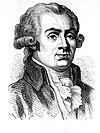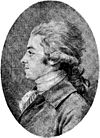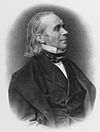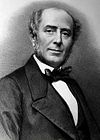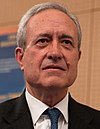
Georges Jacques Danton was a French lawyer and a leading figure in the French Revolution. He became a deputy to the Paris Commune, presided in the Cordeliers district, and visited the Jacobin club. A modest and unknown lawyer on the eve of the Revolution, Danton became a famous orator of the Cordeliers Club and was raised to governmental responsibilities as French Minister of Justice following the fall of the monarchy on 10 August 1792, and was subsequently responsible for inciting the September Massacres. In Spring 1793 he supported the foundation of a Revolutionary Tribunal and became the first president of the Committee of Public Safety. Georges Jacques Danton was a key figure in the case of Dumouriez. After the Insurrection of 31 May – 2 June 1793 he changed his mind on the use of force and lost his seat in the committee; Danton and Robespierre became rivals. In early October 1793, he left politics but was urged to return to Paris to plead, as a moderate, for an end to the Terror. Danton's continual criticism of the Committee of Public Safety provoked further counter-attacks. At the end of March 1794, Danton made a speech announcing the end of the Terror. Within a week, he became embroiled in a scandal concerning the bankruptcy proceedings of the French East India Company and was guillotined by the advocates of revolutionary terror after accusations of conspiracy, venality and leniency toward the enemies of the Revolution.

The Society of the Friends of the Constitution, renamed the Society of the Jacobins, Friends of Freedom and Equality after 1792 and commonly known as the Jacobin Club or simply the Jacobins, was the most influential political club during the French Revolution of 1789. The period of its political ascendancy includes the Reign of Terror, during which well over 10,000 people were put on trial and executed in France, many for political crimes.

The following is a timeline of the French Revolution.

The National Convention was the constituent assembly of the Kingdom of France for one day and the French First Republic for the rest of its existence during the French Revolution, following the two-year National Constituent Assembly and the one-year Legislative Assembly. Created after the great insurrection of 10 August 1792, it was the first French government organized as a republic, abandoning the monarchy altogether. The Convention sat as a single-chamber assembly from 20 September 1792 to 26 October 1795.

The sans-culottes were the common people of the lower classes in late 18th-century France, a great many of whom became radical and militant partisans of the French Revolution in response to their poor quality of life under the Ancien Régime. The word sans-culotte, which is opposed to "aristocrat", seems to have been used for the first time on 28 February 1791 by Jean-Bernard Gauthier de Murnan in a derogatory sense, speaking about a "sans-culottes army". The word came into vogue during the demonstration of 20 June 1792.
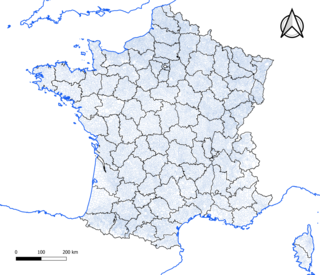
The commune is a level of administrative division in the French Republic. French communes are analogous to civil townships and incorporated municipalities in the United States and Canada, Gemeinden in Germany, comuni in Italy, or municipios in Spain. The UK equivalent are civil parishes. Communes are based on historical geographic communities or villages and are vested with significant powers to manage the populations and land of the geographic area covered. The communes are the fourth-level administrative divisions of France.
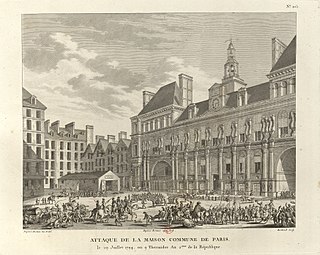
The Paris Commune during the French Revolution was the government of Paris from 1789 until 1795. Established in the Hôtel de Ville just after the storming of the Bastille, it consisted of 144 delegates elected by the 60 divisions of the city. Before its formal establishment, there had been much popular discontent on the streets of Paris over who represented the true Commune, and who had the right to rule the Parisian people. The first mayor was Jean Sylvain Bailly, a relatively moderate Feuillant who supported constitutional monarchy. He was succeeded in November 1791 by Pétion de Villeneuve after Bailly's unpopular use of the National Guard to disperse a riotous assembly in the Champ de Mars.

The September Massacres were a series of killings of prisoners in Paris that occurred in 1792, from Sunday, 2 September until Thursday, 6 September, during the French Revolution. Between 1,176 and 1,614 people were killed by fédérés, guardsmen, and sans-culottes, with the support of gendarmes responsible for guarding the tribunals and prisons, the Cordeliers, the Committee of Surveillance of the Commune, and the revolutionary sections of Paris.

Étienne-Denis, duc de Pasquier, Chancelier de France,, was a French statesman. In 1842, he was elected a member of the Académie française, and in the same year was created a duke by Louis-Philippe.

The National Guard is a French military, gendarmerie, and police reserve force, active in its current form since 2016 but originally founded in 1789 during the French Revolution.
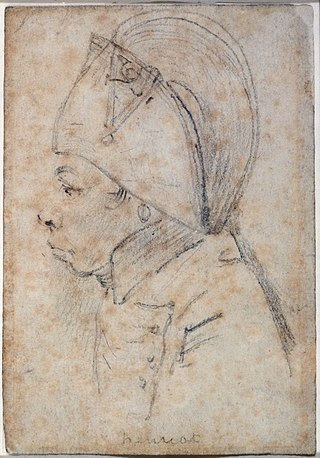
François Hanriot was a French Sans-culotte leader, street orator, and commander of the Garde Nationale during the French Revolution. He played a vital role in the Insurrection of 31 May – 2 June 1793 and subsequently the fall of the Girondins. On 27 July 1794 he tried to release Maximilien Robespierre, who was arrested by the Convention. He was executed on the next day – together with Robespierre, Saint-Just and Couthon – by the rules of the law of 22 Prairial, only verifying his identity at the trial.

The police prefecture is the unit of the French Ministry of the Interior that provides police, emergency services, and various administrative services to the population of the city of Paris and the surrounding three suburban départements of Hauts-de-Seine, Seine-Saint-Denis, and Val-de-Marne. It is headed by the Prefect of Police.

The Hôtel de Ville is the city hall of Paris, France, standing on the Place de l'Hôtel-de-Ville – Esplanade de la Libération in the 4th arrondissement. The south wing was originally constructed by François I beginning in 1535 until 1551. The north wing was built by Henry IV and Louis XIII between 1605 and 1628. It was burned by the Paris Commune, along with all the city archives that it contained, during the Semaine Sanglante, the Commune's final days, in May 1871. The outside was rebuilt following the original design, but larger, between 1874 and 1882, while the inside was considerably modified. It has been the headquarters of the municipality of Paris since 1357. It serves multiple functions, housing the local government council, since 1977 the Mayors of Paris and their cabinets, and also serves as a venue for large receptions.

The Revolutionary Tribunal was a court instituted by the National Convention during the French Revolution for the trial of political offenders. It eventually became one of the most powerful engines of the Reign of Terror.

Maximilien François Marie Isidore de Robespierre was a French lawyer and statesman who became one of the most widely known, influential, and controversial figures of the French Revolution.
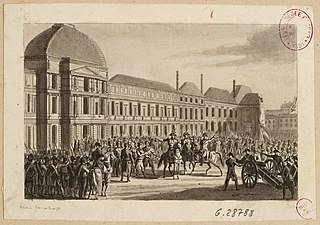
The insurrection of 31 May – 2 June 1793, during the French Revolution, started after the Paris commune demanded that 22 Girondin deputies and members of the Commission of Twelve should be brought before the Revolutionary Tribunal. Jean-Paul Marat led the attack on the representatives in the National Convention, who in January had voted against the execution of the King and since then had paralyzed the Convention. It ended after thousands of armed citizens surrounded the Convention to force it to deliver the deputies denounced by the Commune.The insurrection resulted in the fall of 29 Girondins and two ministers under pressure of the sans-culottes, Jacobins, and Montagnards.

The revolutionary sections of Paris were subdivisions of Paris during the French Revolution. They first arose in 1790 and were suppressed in 1795.
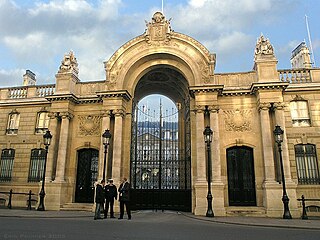
As the capital of France, Paris is the seat of France's national government. For the executive, the two chief officers each have their own official residences, which also serve as their offices. The President of France resides at the Élysée Palace in the 8th arrondissement, while the Prime Minister's seat is at the Hôtel Matignon in the 7th arrondissement. Government ministries are located in various parts of the city; many are located in the 7th arrondissement, near the Matignon.

Paris in the 18th century was the second-largest city in Europe, after London, with a population of about 600,000 people. The century saw the construction of Place Vendôme, the Place de la Concorde, the Champs-Élysées, the church of Les Invalides, and the Panthéon, and the founding of the Louvre Museum. Paris witnessed the end of the reign of Louis XIV, was the center stage of the Enlightenment and the French Revolution, saw the first manned flight, and was the birthplace of high fashion and the modern restaurant and bistro.

The Lyon Commune was a short-lived revolutionary movement in Lyon, France, in 1870 and 1871 - republicans and activists from several components of the far-left of the time seized power in Lyon and established an autonomous government. The commune organized elections, but dissolved after the restoration of a republican "normality", which frustrated the most radical elements, who hoped for a different revolution. Radicals twice tried to regain power, without success.



